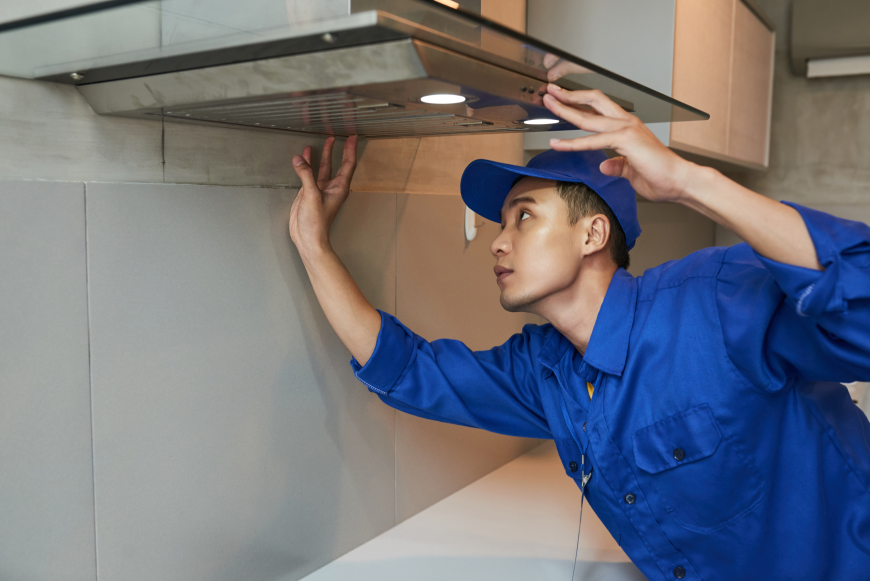Common Signs that Indicate a Chimney Needs Maintenance
Learn the key warning signs your chimney needs maintenance, from smoke issues to crumbling bricks. Keep your home safe with these expert chimney care tips.

Chimneys are usually placed in a way that they are out of sight, and there aren’t many bothering exits until a problem arises. However, similar to any other part of your home, chimneys also require timely maintenance to ensure they operate efficiently, safely, and effectively. Also, if the maintenance of one’s chimney is neglected for a longer period of time, it can create dangerous situations like unwanted and unnoticed fires, carbon monoxide buildup, and serious structural damage. It’s important to know and identify the signs that tell that your chimney needs some repair or maintenance to evict costly repairs. With this article, you will be well aware of all the factors regarding Chimney Restoration in Dublin and of all the common signs that adequately indicate that your chimney requires maintenance:
1. Smoke Backing Up into the Room
One of the most obvious signs that your chimney needs maintenance is smoke backing up into your home. This typically occurs when there’s a blockage or obstruction in the chimney. Common culprits include creosote buildup, debris like leaves or bird nests, or a collapsed chimney liner. Smoke should rise and exit through the chimney, but when the airflow is restricted, it can flow back into your living space, which could be hazardous. If you notice this happening, it’s important to have your chimney cleaned and inspected as soon as possible.
2. Soot or Creosote Build-up
Soot and creosote are natural byproducts of burning wood, but over time, these substances can accumulate inside the chimney. Creosote is particularly problematic as it is highly flammable and can cause chimney fires if allowed to build up. If you notice a strong smell of burning or see a dark, sticky substance on your chimney walls, these are signs of creosote accumulation. Regular chimney inspections are essential to check for creosote buildup, as the longer it sits in your chimney, the higher the risk of dangerous fires.
3. Cracked or Damaged Chimney Liner
The chimney liner is a crucial component that protects the structure of your chimney from heat and corrosive byproducts. Over time, however, the liner can become damaged due to age, wear and tear, or the effects of moisture. Cracks in the liner can allow harmful gases, such as carbon monoxide, to escape into your home. It can also increase the risk of a chimney fire. If you notice cracks in your chimney or suspect damage, it’s important to have it inspected by a professional to prevent further issues.
4. Water Leaks or Stains on the Chimney Wall
Water leaks or stains inside the chimney or around the fireplace could be a sign of a deteriorating chimney or chimney cap. When rainwater gets into the chimney, it can cause rusting of metal components, damage the masonry, and even lead to mold growth. Water damage can also result in the deterioration of mortar joints and other components of the chimney structure, making it less efficient and more prone to collapse. If you notice water stains around your chimney or fireplace, it’s time to get a professional chimney inspection.
5. Unpleasant Odors
If you smell a foul, musty odor or a smoky smell coming from your chimney, it’s an indication that there may be moisture trapped in the chimney. This moisture can cause mold or mildew to develop, creating unpleasant odors. Additionally, animals may have taken up residence in the chimney, adding to the smell. A professional chimney sweep can help eliminate the odor by cleaning and inspecting your chimney for any moisture, animals, or blockages.
6. Chimney Mortar or Brick Damage
Another sign of chimney maintenance needs is damage to the brickwork or mortar joints. Chimney brick and mortar are exposed to intense heat and moisture, which can cause them to crack, erode, or become loose over time. Visible cracks in the bricks or mortar may allow water to seep in, leading to further damage and the potential for structural issues. If you notice any damage to your chimney’s exterior, it’s crucial to get it repaired promptly to prevent more serious problems.
7. Animals or Birds in the Chimney
If you hear strange noises or see animals such as squirrels, birds, or raccoons entering your chimney, it’s a sign that there may be an issue with your chimney cap or flue. Animals often seek shelter in chimneys, especially in colder months. If they are not removed quickly, they could build nests, which will obstruct the chimney and create a fire hazard. In some cases, animals can become trapped inside the chimney, leading to dangerous situations. Ensure your chimney has a proper cap or guard to prevent animals from entering.
8. Rust or Corrosion on the Damper or Other Metal Parts
The damper, along with other metal components inside the chimney, can experience rust or corrosion due to exposure to heat, moisture, and the elements. Rusted or corroded components can make it difficult to operate the damper, which can affect airflow and the overall function of the chimney. If you notice rust or corrosion on any part of the chimney, it’s a sign that the metal parts are deteriorating, and you should have them repaired or replaced.
Conclusion
A well-maintained chimney is essential for keeping your home safe and comfortable. Recognizing the signs that indicate a chimney needs maintenance can help you avoid hazardous situations and costly repairs. Regular inspections, cleaning, and repairs by a professional chimney sweep are key to ensuring that your chimney remains in good working condition. By staying on top of these signs and addressing potential issues early, you can keep your home warm and safe while preventing costly damage in the future. Always trust a licensed professional for chimney inspections and maintenance to ensure the work is done correctly and safely.

 Roofpro
Roofpro